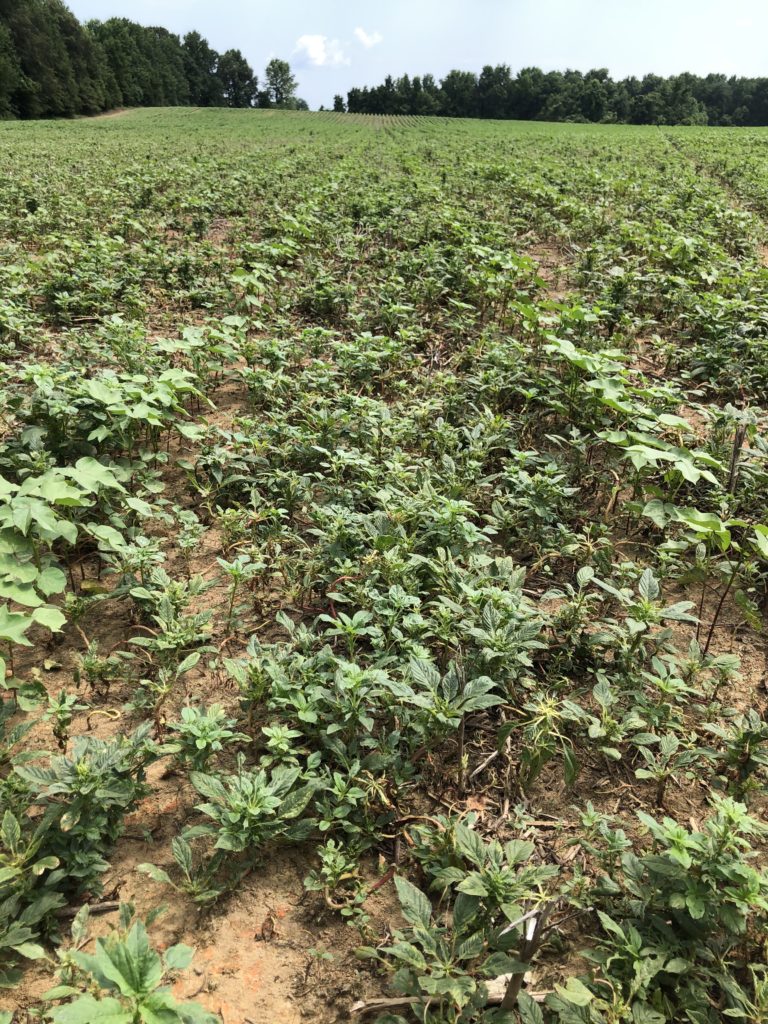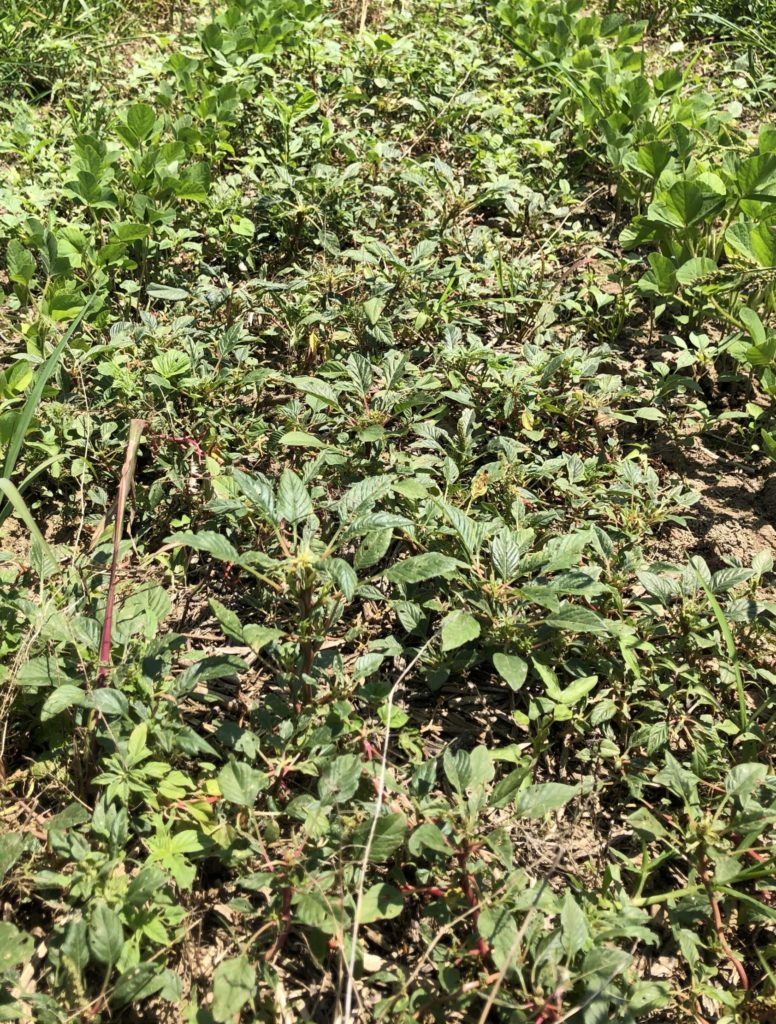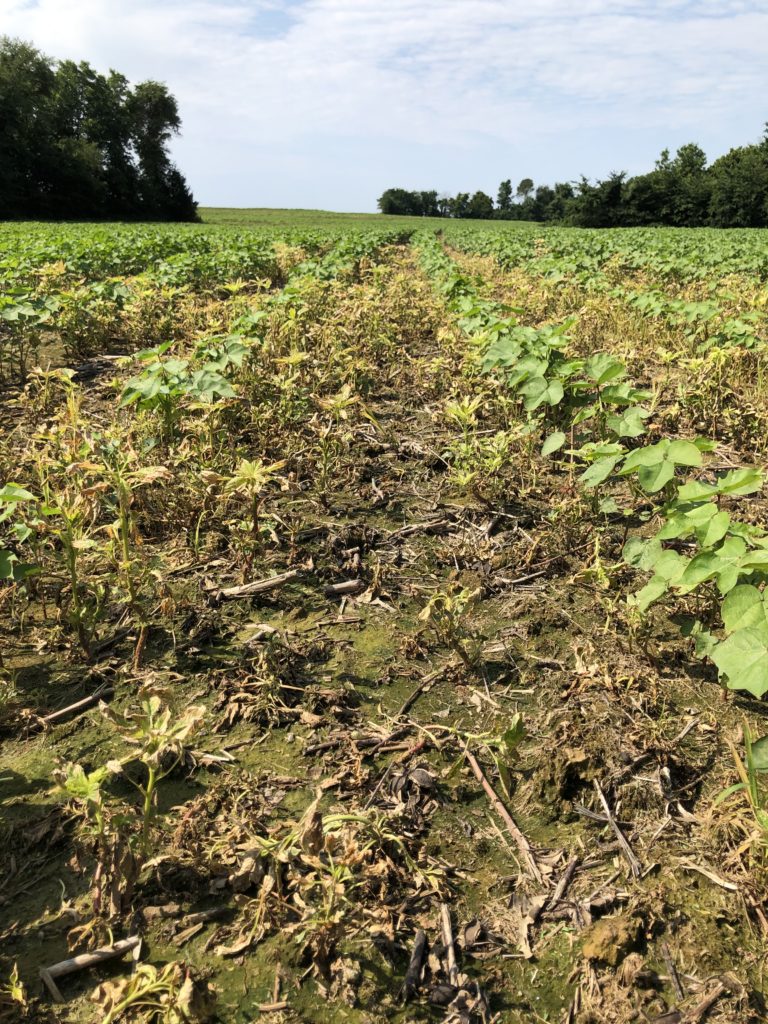
Calls continue from some folks frustrated with goosegrass, junglerice and Palmer amaranth escapes after a dicamba + glyphosate application. A large reason for the frustration is the follow-up applications have often provided less control than hoped. Timing is the cause for some of these poor weed control issues. Herbicide resistance is another cause.
The grass control issues can only be solved with an application of clethodim applied at least 5 days after the dicamba and glyphosate application. Clethodim applications applied within 3 days of a dicamba application will still typically provide poor grass control due to dicamba still effecting herbicide translocation throughout the grass.
The Palmer amaranth that has escaped the initial dicamba application have ranged from a few scattered pigweeds across a field to a heavy carpet (picture above). Sprayers are often running behind and as a result many of these follow-up applications are occurring 2 weeks or later after the initial application. Judging from field observations, the level of dicamba tolerance in these escaped Palmer amaranth appear to be at least 2x. As such, even if the follow-up dicamba application was applied within 7 days, control would still likely be sketchy. It has no chance after 14 days (picture below).

Glufosinate used as the follow-up application also has often not controlled Palmer amaranth that has escaped a dicamba application when applied 7 or more days after the initial field treatment. The timing needs to be closer to 3 days after the initial application to have the best chance to remove the escaped Palmer amaranth. Also consider increasing the rate to 40 ozs if the Palmer has more than 4” of new growth or if applications are made more than 3 days after the initial application. Remember the best chance for good Palmer control with Liberty is to apply it in the middle of the day.

A few calls have come from folks with Palmer amaranth escapes after an Enlist One plus glyphosate application. Reports and field research have shown that follow-up applications of Enlist One or Liberty is at times not providing good control of Palmer amaranth that has escaped that initial application (Picture above).
The most consistent way to control Palmer amaranth in Enlist crops is to apply a tankmix of Enlist One + Liberty. This tankmix has been hands down the most effective at controlling Palmer amaranth. In our research as well as some field visits it is common to see Palmer escape Enlist One + glyphosate but escapes are rarely an issue following the Enlist One + Liberty tankmix.


This makes me sick. I feel bad for this grower.
Richard
Had the same feeling when I walked into that field. Unfortunately, have walked into a number of fields over the past 10 days with numerous Palmer that have escaped one or in some cases 2 dicamba applications. However, none were like the numbers in that field. It seems y’all in Haywood county are still fortunate as no calls of poor pigweed control have come from there.
take care,
Larry
Well that did not last long. Two reports of Palmer escapes in Haywood county. Spraying same Palmer 3 times to control it is way too costly!
That is a fact